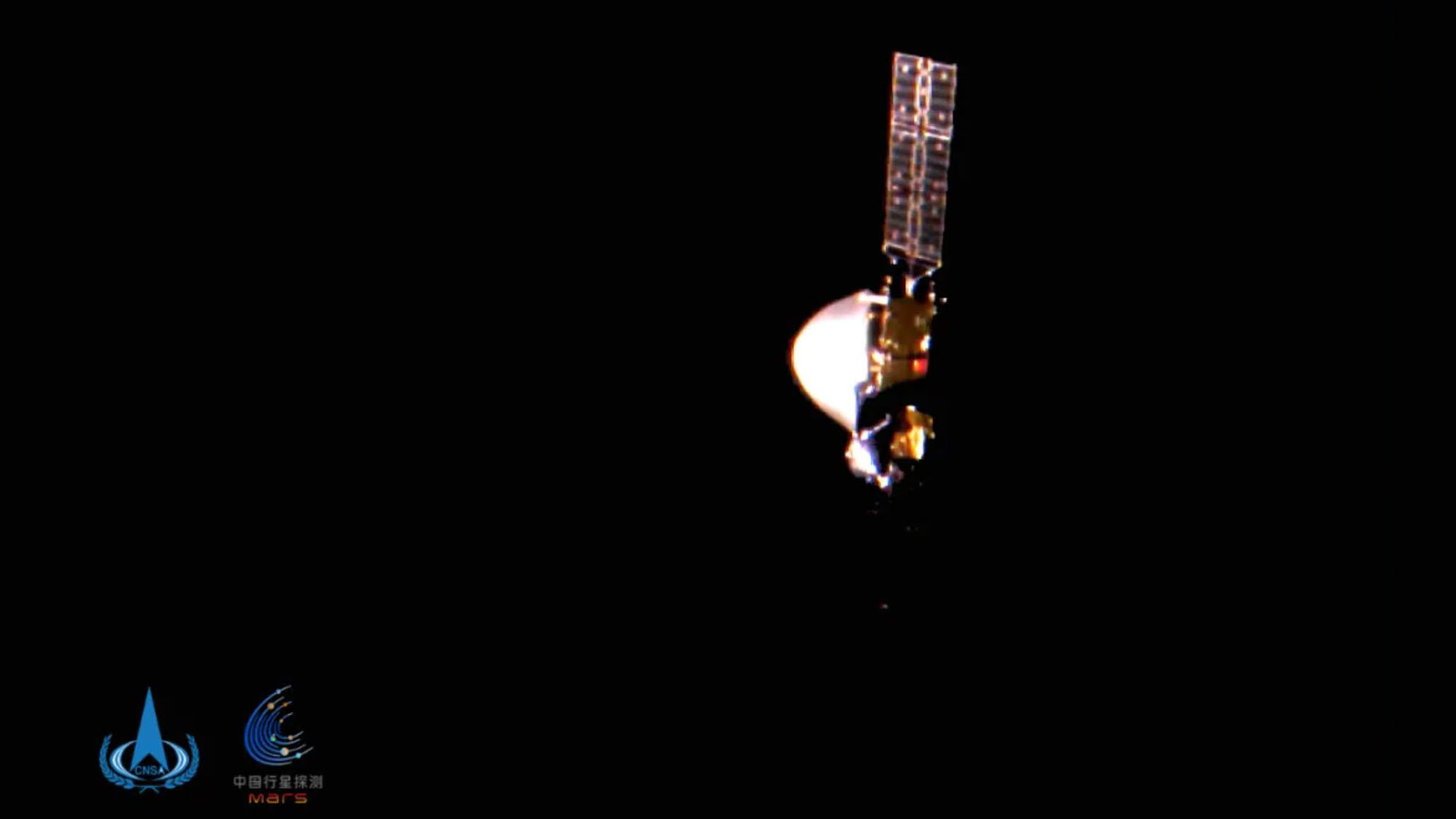China's Tianwen-1 spacecraft will reach Mars orbit on February 10

China's Tianwen-1 Mars orbiter and rover are speeding toward the Red Planet and preparing to arrive on Feb. 10, the China National Space Administration (CNSA) has said.
Tianwen-1 has been in space for nearly 24 weeks and was around 81 million miles (130 million kilometers) from Earth and 5.15 million miles (8.3 million km) from Mars on Jan. 3 Beijing time, according to CNSA.
With all systems working normally, the spacecraft is due to enter Mars orbit on Feb. 10, according to China's CCTV news network. The five-ton spacecraft will perform a burn of its engines to slow it down enough to be captured by Mars" gravitational pull.
Related: China's Tianwen-1 Mars probe snaps epic deep-space selfie (photos)
Tianwen-1 will be about 118 million miles (190 million kilometers) away from the Earth when the probe arrives in Mars orbit, after a journey of around 292 million miles (470 million km), CNSA says.
The great distance between Earth and Tianwen-1 means a lightspeed communication delay of around 10 minutes, so real-time control of the spacecraft is not possible. The spacecraft will thus need to carry out commands itself.
Li Zhencai, deputy commander of the Tianwen-1 Mars probe project with the China Academy of Space Technology (CAST), which made the spacecraft, told Chinese media that preparations for entering Mars orbit are underway.
Breaking space news, the latest updates on rocket launches, skywatching events and more!
"We plan to complete all the commands and the joint exercise with the Beijing Aerospace Control Center before Jan. 24," Li said in a CCTV interview.
Li said a fourth trajectory correction maneuver is to be carried out to ensure the spacecraft will be on course for entering Mars orbit.
After entering orbit, Tianwen-1 will begin to prepare for a landing attempt of the mission's rover. The orbiter will begin imaging the main candidate landing site within the huge impact basin Utopia Planitia, to the south of NASA's Viking 2 landing site.
Getting ready for the attempt will take time however, with CNSA stating that the landing won't take place until May.
If it can stick the landing the yet-to-be-named, roughly 530-lb. (240 kilograms) solar-powered Tianwen-1 rover will investigate the surface soil characteristics and potential water-ice distribution with its Subsurface Exploration Radar instrument. The Mars rover will also analyze surface material composition and characteristics of the Martian climate and environment on the surface.
Related: China's Mars mission tests instruments on its way to the Red Planet
Tianwen-1 launched in July 2020. Since then it has performed three trajectory correction maneuvers to finely alter its course, along with a larger so-called deep space maneuver to adjust its orbital path.
Tianwen-1 is one of three spacecraft making their final approaches to the Red Planet. The United Arab Emirates' Hope Mars probe is due to reach Mars a day ahead of Tianwen-1, on Feb. 9. NASA's Perseverance rover will make its landing attempt on Feb. 18.
China has landed on the moon three times, with Chang'e 3 in 2013, Chang'e 4 on the far side in 2019, and Chang'e 5 in December last year.
However Tianwen-1 is China's first independent interplanetary mission and landing on Mars, with its thin atmosphere, remoteness and different gravity field, presents new and greater challenges.
Follow us on Twitter @Spacedotcom and on Facebook.

Andrew is a freelance space journalist with a focus on reporting on China's rapidly growing space sector. He began writing for Space.com in 2019 and writes for SpaceNews, IEEE Spectrum, National Geographic, Sky & Telescope, New Scientist and others. Andrew first caught the space bug when, as a youngster, he saw Voyager images of other worlds in our solar system for the first time. Away from space, Andrew enjoys trail running in the forests of Finland. You can follow him on Twitter @AJ_FI.

